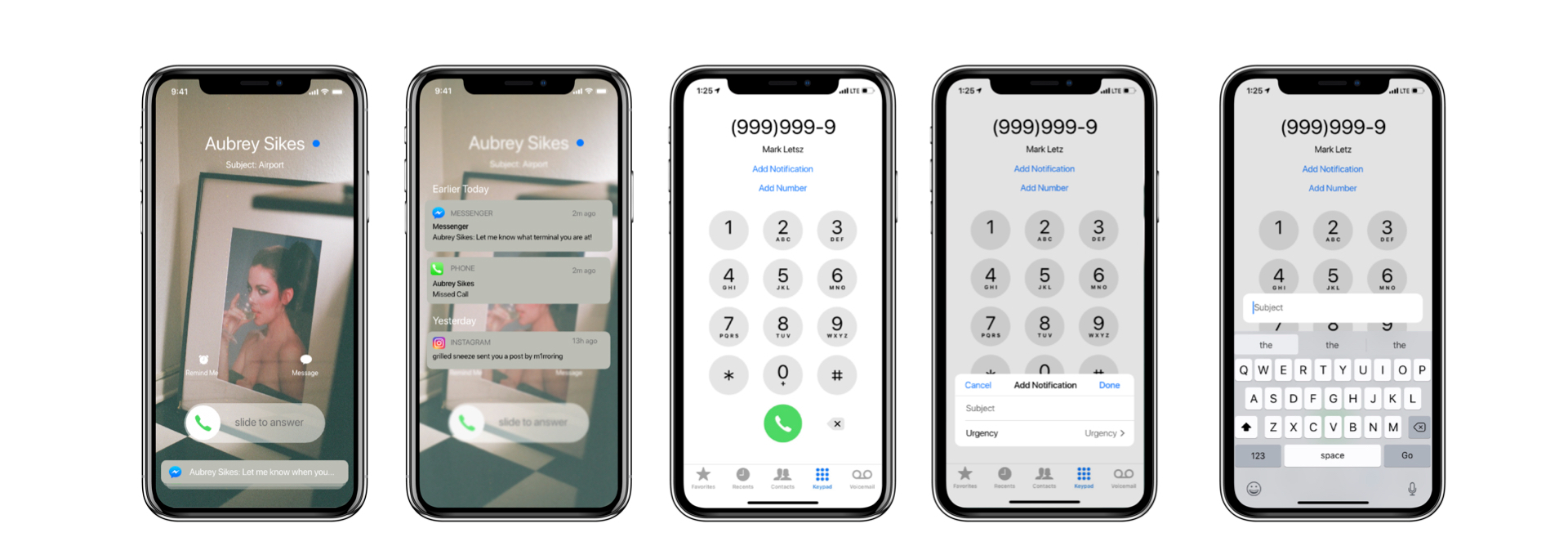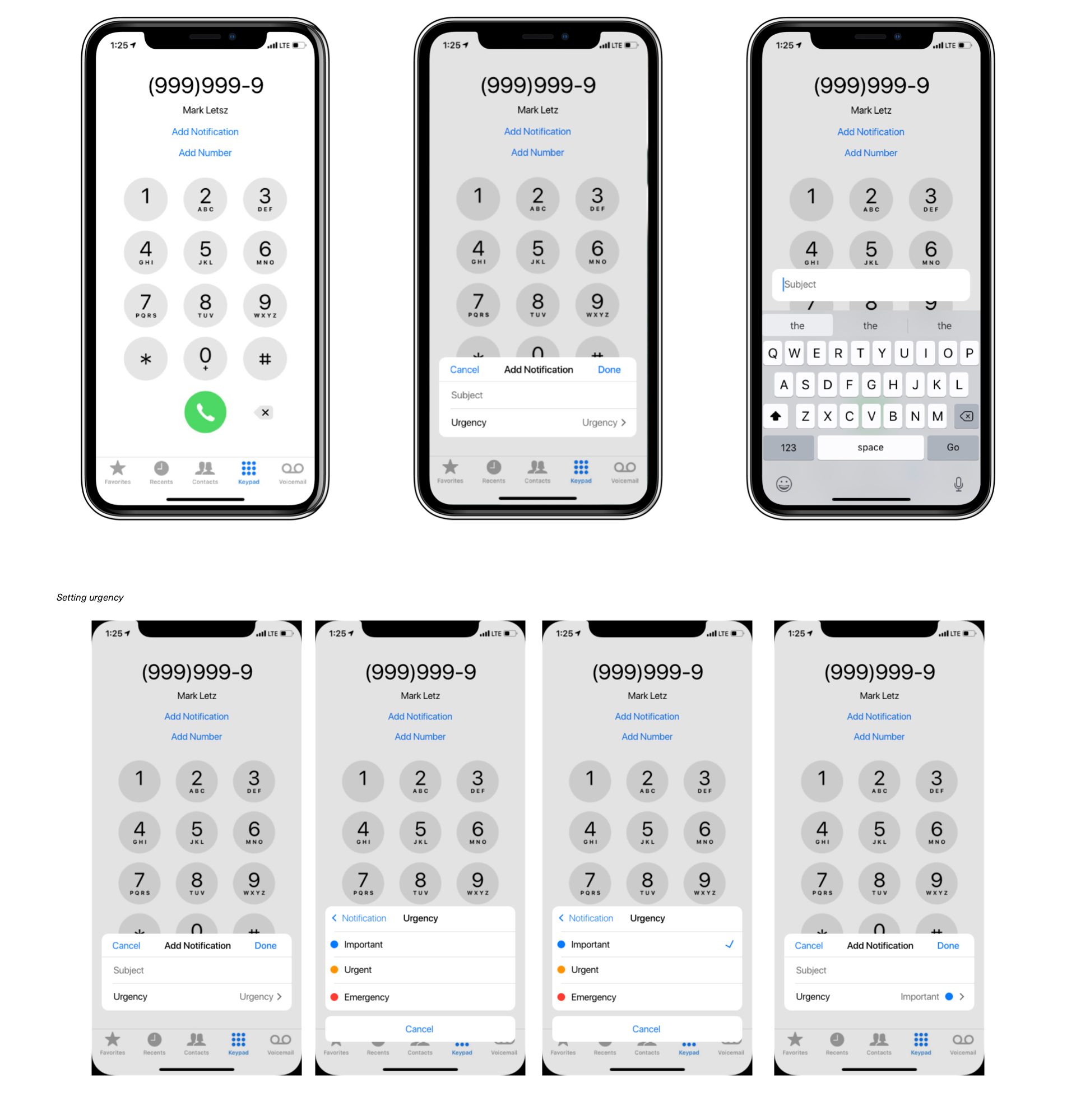Final Solution
This is fill text This is fill text This is fill text This is fill text This is fill text
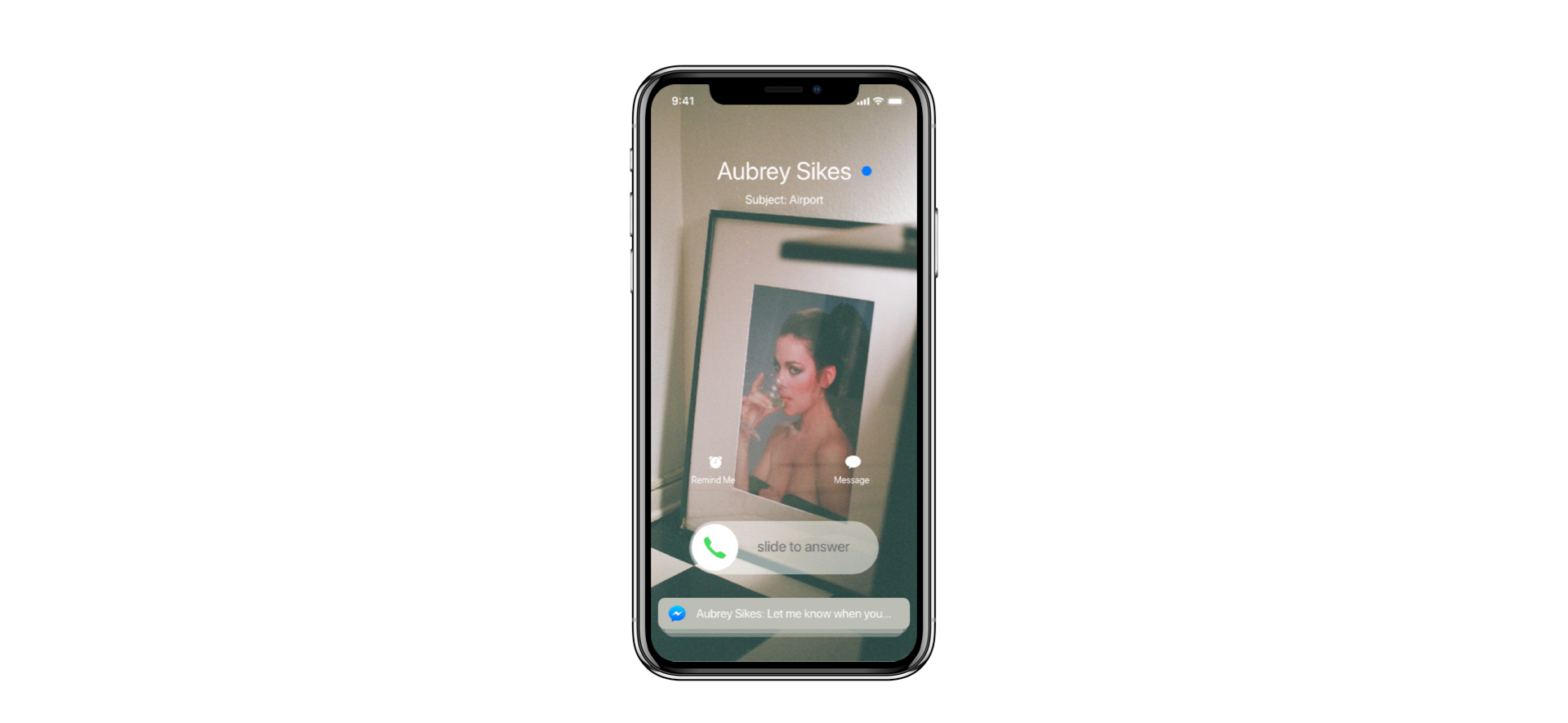
Phone calls have particularly dynamic information architecture structures. The UI interactions of an outgoing or incoming call rely heavily on factors outside of your immediate interface control. This means that how you interact with the UI is influenced by your real-life interactions with the person calling or being called. These real-life interactions dictate how you engage in the phone call process, how you react to a phone call, and the steps you take after a call is missed or ignored. These decisions do not end at the call screen because factors such as missed call notifications, texting after a call, or switching to a different communication platform can prompt a user to use a method other than a phone call. Even more important than the subject matter of the call is the relationship the users have outside the context of the call. This relationship will dictate the beginning of UI interactions and can also change during the call, which can distort the information architecture. For this reason, user relationships are not factored into the UI/information architecture redesign, but it is still important to keep them in mind. The relationship and contact clue variables are the most important factors in why a call is answered, ignored, or responded to. With this in mind, this project aims to make contextual improvements to the phone UI to give the caller the ability to maximize their call response chances and the receiver to better gauge if the call should be answered at the moment, later, or not at all. Most of the improvements are on the call sender's side as the continual responsibility is on the instigator.

This question prompted my investigation into the information architecture of phone calls and provided a foundation for my research. After much deliberation about where to start this project, I found that a common problem with phone calls is that people often do not understand why they should use voice communication over text. "Why would I call someone when I could text them (via text message, direct message on Twitter, Instagram, Slack, FaceTime, etc.)?" Initially, this notion seemed valid, leading me to formulate another basis for my research.

After further deliberation based on my research, I found that the issue of when to call someone is a matter of context rather than function. While many people acknowledge that voice communication is faster than text, they often choose text communication because it avoids the additional concerns and constraints of a phone call. Over time, phone calls have become associated with serious events, causing anxiety for many people. As a result, they often opt for more comfortable and convenient forms of communication.

After refocusing my research I decided the best way to provide meaningful improvement to the phone call process was the following:

A concept crucial to formulating my solution was "communication debt." I define communication debt as the feeling of obligation to communicate or respond. This idea was important to solidify in my mind as it allowed me to view the phone call process as something not fully encapsulated within the phone interface's UI. Communication debt can lead someone to either pick up a phone call out of obligation or let a call go to voicemail because they feel so indebted to the caller that the call itself induces anxiety. Many users suffer from call anxiety, and for some, this anxiety is so strong that they actively avoid phone interactions. Because of this anxiety, many people would rather not answer the phone than go through the process of taking a call. Subsequently, the more missed calls pile up, the harder it becomes to answer them due to the feeling of guilt for not holding up their end of the communication (communication debt).

If the caller's intent is unknown until the call is answered, the decision to answer depends on the relationship between the caller and the receiver and the timing of the call. Without knowing the caller's intent, users face a Schrödinger's cat-like situation where the question of answering a phone call is not a problem of UI but a problem of context. The timing of the call and the relationship status can provide this context.

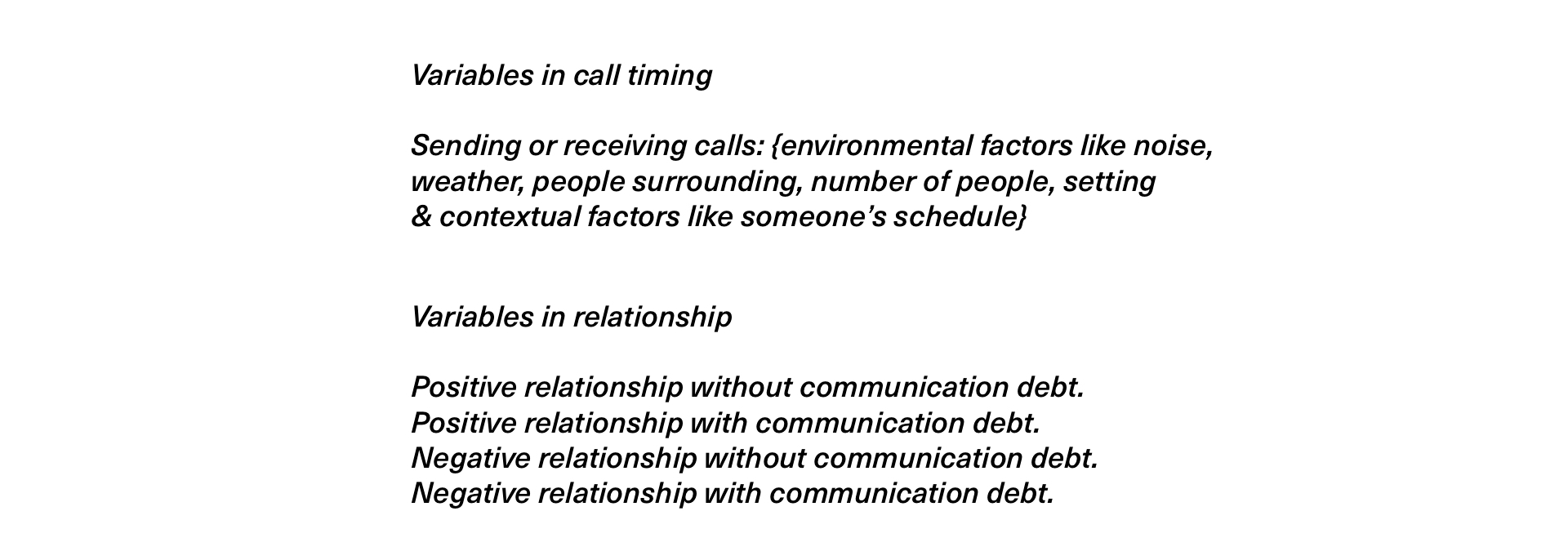
When having a phone call, you are either the caller or the receiver, and these two roles have different responsibilities and UI needs. As a caller, you are either providing information of varying importance or seeking information of varying time sensitivity. As a receiver, the decision to take the call depends on variables such as timing, relationship, and previous context. With this in mind, the goal of my redesign was to bring this information forward in the application's information architecture. Additionally, I aimed to provide contextual cues about the reason for the call to aid in the decision to answer the call.
This is the information architecture chart I created after the research phase, which maps out the current phone call process. Using this chart, I identified areas for improvement, which I further developed as I transitioned into the UI design phase. The primary utility of this chart was to map out the mental models of both the caller and the receiver. It helped me identify UI interactions (or the lack thereof) and understand the gaps in comprehension between users.
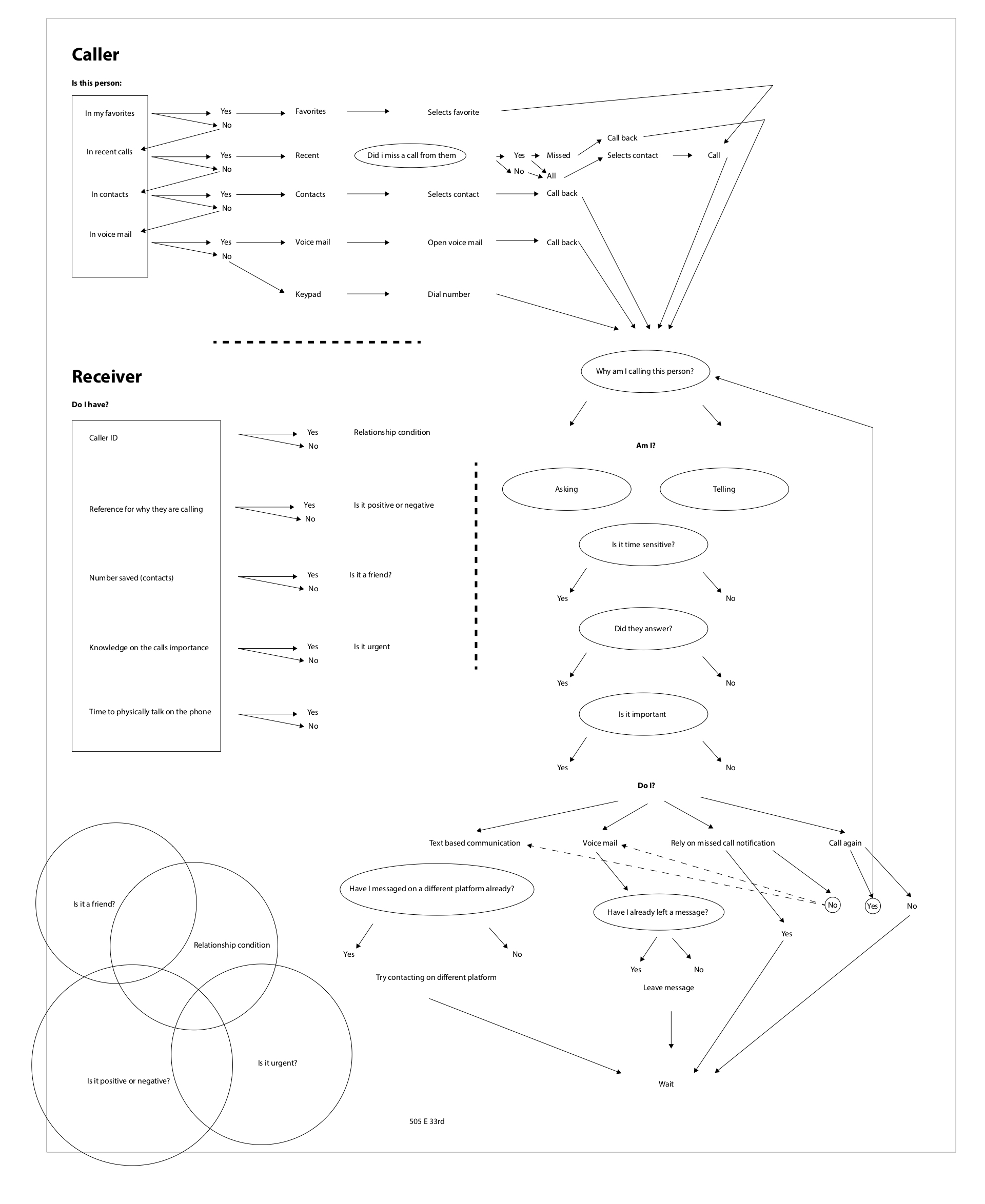
In this initial solution, I brought my research into design and made the following improvements to the incoming and missed call screen: Brief message history, Recent call history, Call Subject, Caller ID, and Urgency Notification.
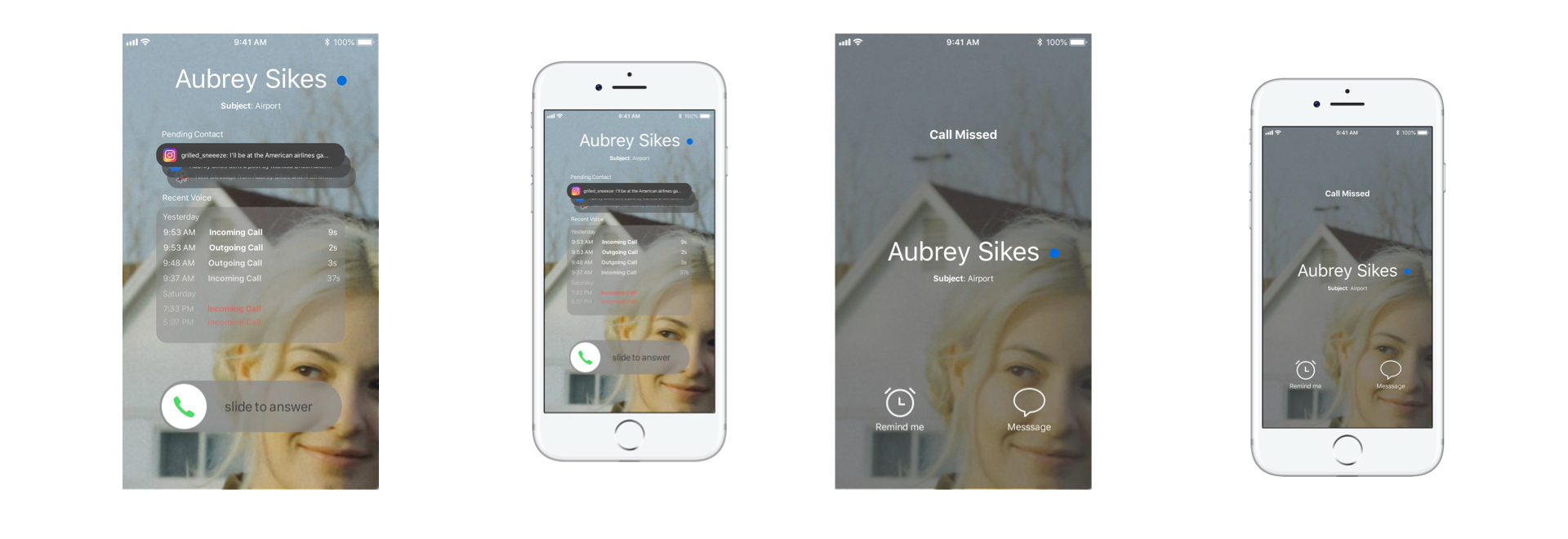
I revised my initial design, but after review, I found it to be less efficient and based on an older version of iOS.
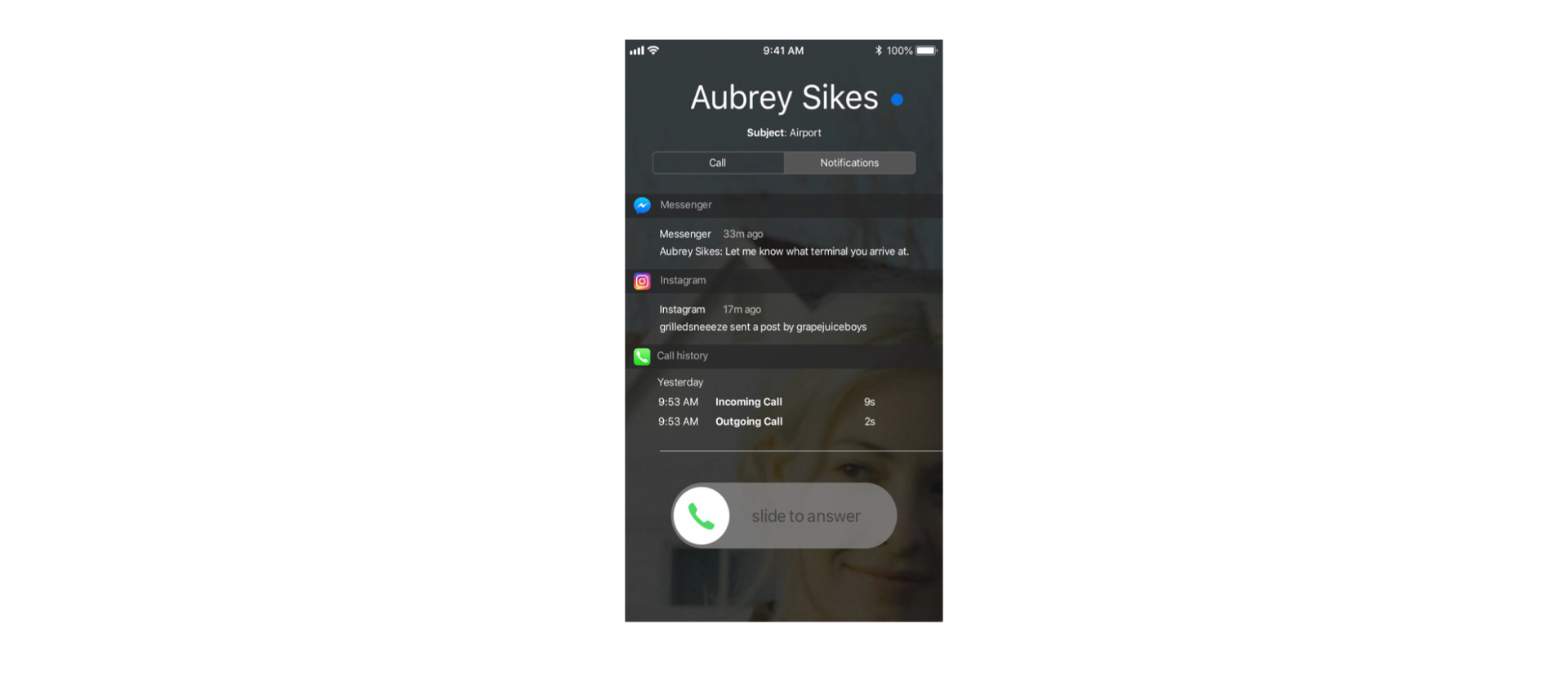
This is fill text This is fill text This is fill text This is fill text This is fill text
